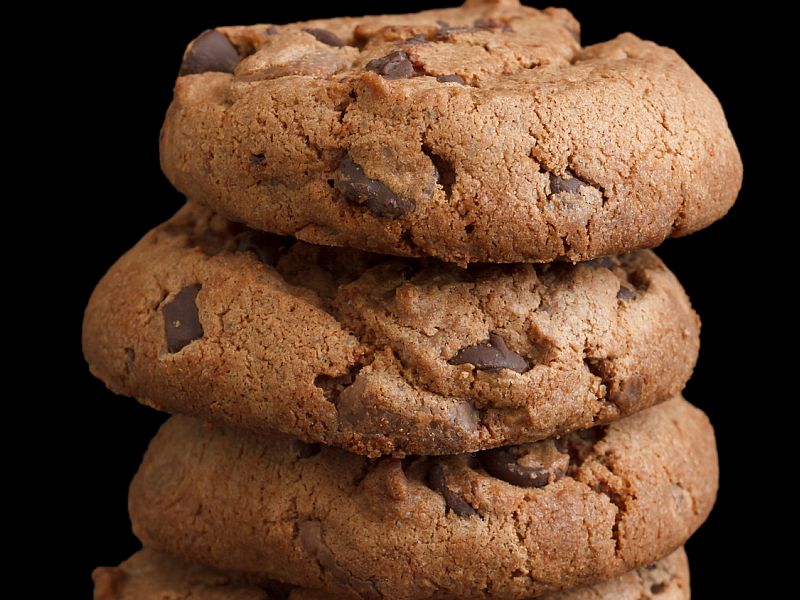SUNDAY, Aug. 25, 2019 (HealthDay News) — A quirk in quality testing could mean that pot-laced chocolates are more potent than their label indicates, researchers report.
Many states that allow the sale of marijuana-infused edibles — gummy bears, cookies and chocolates — require package labeling that shows the products’ level of THC, the compound that gets you high.
But potency testing on chocolate products appears to be slightly skewed, said David Dawson, a research principal with CW Analytical Laboratories, one of California’s longest-operating marijuana testing labs.
It turns out that larger samples of chocolate used in testing actually produce less accurate results than smaller samples, Dawson said.
“It’s pretty striking and definitely goes against your basic gut instinct,” Dawson said.
“As the amount of sample you are testing increases, it should be more representative of the whole of the product. Thus, you should be getting more solid values,” Dawson said. “We saw the opposite here, where we actually start getting less accurate and precise values the more actual product we are testing at a given moment.”
The testing flaw tends to cause a chocolate product’s THC levels to be reported as lower than they actually are, Dawson said. For example, a bar containing 97 milligrams of THC might test at 93 milligrams.
The variance “isn’t enough to truly pose a danger to consumers, but it is enough to possibly make a good product fail compliance testing,” Dawson explained.
However, other experts are concerned that consumers might get in over their heads if they purchase a pot-infused chocolate bar that’s more powerful than its label says.
Imbibing too much THC “can result in not only longer-lasting sedative and depressant effects, but a greater potential for paradoxical central nervous system toxicity in the form of psychotic behavior and seizures,” said Dr. Robert Glatter. He’s an emergency medicine physician with Lenox Hill Hospital in New York City.
California law states that edibles can contain a maximum 100 milligrams of THC in a given package, Dawson said.
An edible cannabis product fails testing if its THC levels vary 10% or more from the labeled amount, Dawson added. Products containing too little THC must be relabeled, and a batch containing too much THC must be destroyed.
Recreational pot markets are hot these days, and testing labs are struggling to keep up, Dawson noted.
“Everyone is trying to come out with a new product, develop a new product type,” Dawson said. “We’re really awash in different products we need to be able to test to the fullest.”
Dawson and his colleagues decided to test whether chocolate edibles were being accurately assessed by altering sample conditions to see if they got the same results time and again. Turns out, they didn’t.
“When we had less cannabis-infused chocolate in the sample vial, say 1 gram, we got higher THC potencies and more precise values than when we had 2 grams of the same infused chocolate in the vial,” Dawson said.
Dawson is not yet sure what’s causing the inaccuracies, but he suspects it has to do with the fat content of chocolate. THC is fat-soluble, and many chocolate products contain large amounts of fat.
“We found we had the lowest recovery of THC from a standard solution with products that are more fatty,” Dawson said. “The white chocolate and baking chocolate gave lower results than cocoa powder, which seems to suggest it is not the actual cocoa solid having an effect. It seems to be more tied to the presence of the fatty, creamy chocolate.”
Dawson expects that such testing issues will continue to surface as recreational pot markets mature in the legalized states.
“Commercial cannabis testing has to really blossom for us to get the most precise and accurate results on the products we are testing,” Dawson said. “As the industry settles in, I do anticipate there will be little testing quirks and inefficiencies that are discovered, because that’s how the scientific method works.”
But the stakes are high and the science needs to advance quickly, said Dr. Harshal Kirane, medical director of Wellbridge Addiction Treatment and Research in Calverton, N.Y.
“As recreational cannabis becomes more available across the country, it is essential that we are able to accurately and reliably test the make-up of these products,” Kirane said. “Hand in hand with increased access to recreational cannabis is an expectation that such products are used responsibly, which means consumers must be provided accurate product information.”
In the meantime, Glatter recommends that consumers exercise caution when using pot edibles.
“If you choose to partake, it’s imperative to adhere to the serving size recommended by the manufacturer, which is usually a very small amount of the entire product,” Glatter said. “There is a delayed effect with edibles, typically one to two hours after ingestion, which may lead to unintentional overdose and prolonged effects.”
Dawson presented the results Sunday at the American Chemical Society’s annual meeting in San Diego. Such research is considered preliminary until published in a peer-reviewed journal.
More information
The U.S. Centers for Disease Control and Prevention has more about the health effects of marijuana.
Copyright © 2025 HealthDay. All rights reserved.

